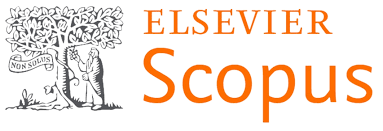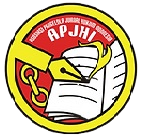Author Guideline
A. GENERAL GUIDELINES FOR AUTHORS
1. The author sends the manuscript that has been carefully examined. Then register as a writer.
2. Manuscripts are written in Indonesian or English and have never been published or not in the process of submission for publication to other media and do not contain elements of plagiarism as evidenced by the Statement of Originality of Manuscripts.
3. Manuscripts are scientific works from the results of research or conceptual ideas.
4. Manuscripts will be published in the Volksgeist: Jurna Ilmu Hukum dan Konstitusi after being reviewed by peer reviewers.
5. The manuscript must be prepared in accordance with the author's guidelines and template
B. ARTICLE PROVISIONS
1. Article Manuscript
Manuscripts are written using font Time New Roman size 12 with 1.5 spaces in A4 size. More details see Journal Templates
2. Title
The title must be short, bright, and informative, but does not exceed 15 words. It must be right with the problem discussed. Article titles do not contain unusual abbreviations. The main ideas must be written first and followed by an explanation.
3. Author Identity
Writer's name
The author's name is listed without a title
Affiliation / institution
E-mail (E-mail must be active due to e-mail correspondence)
4. Abstracts and Keywords
The abstract contains an introduction to the problem, the purpose of the text, the research method and the summary of the results. Abstracts are made in one paragraph typed in English and Indonesian maximum 150 words. Written with Time New Roman 12. Keywords (3-5 phrases).
5. Introduction
The introduction must be clear and provide legal issues to be discussed in the text. The author must provide an adequate background, and a very short survey of the literature to record the existing solutions, to show where the best is from the previous researcher, to show what you want to achieve (to show boundaries), and to show the strength or scientific novelty from the writing, mentioning research problems and research methods. At the end of the introduction, the purpose of writing the article must be stated.
6. Research Methods
This method is written descriptively and must provide a statement about the research methodology, including the type of research, research approach, data sources and methods of analysis. The author must explain the mechanism for analyzing legal issues. This method gives the reader as much ideas as possible through the method used, this method is optional, only for original research articles. (For Conceptual Ideas Without Research Methods)
7. Analysis and Discussion
This section consists of the results of research and how they are discussed. The results obtained from the research must be supported by adequate data. The results of research and findings must be the answer, or research hypothesis stated earlier in the introduction. The following components must be discussed in the discussion: How will your results relate to the initial questions or objectives described in the Introduction (what / how) section? Do you provide a scientific interpretation of each outcome or finding presented (why)? Are your results consistent with what other investigators report (what else)? Or is there a difference?
8. Conclusion
The conclusion of this study can be presented in a brief conclusions section. Conclusions must answer the purpose of research and research findings. Concluding remarks should not only contain repetition of results and discussions or abstracts. You should also suggest future research and show what is happening.
C. Writing Substance
1. The Volksgeist journal only contains articles on the study of law and constitution, along with the derivation of the study.
2. Articles are original and have clear contributions of knowledge.
3. Articles should be based on as many sources of primary literature as possible (research results).
4. Articles should be based on the most up-to-date reference materials (for example, the last 10 years)
5. Writing techniques using footnotes and bibliographies / bibliography using a system citing the Chicago Manual of Style 17th edition (full note).










